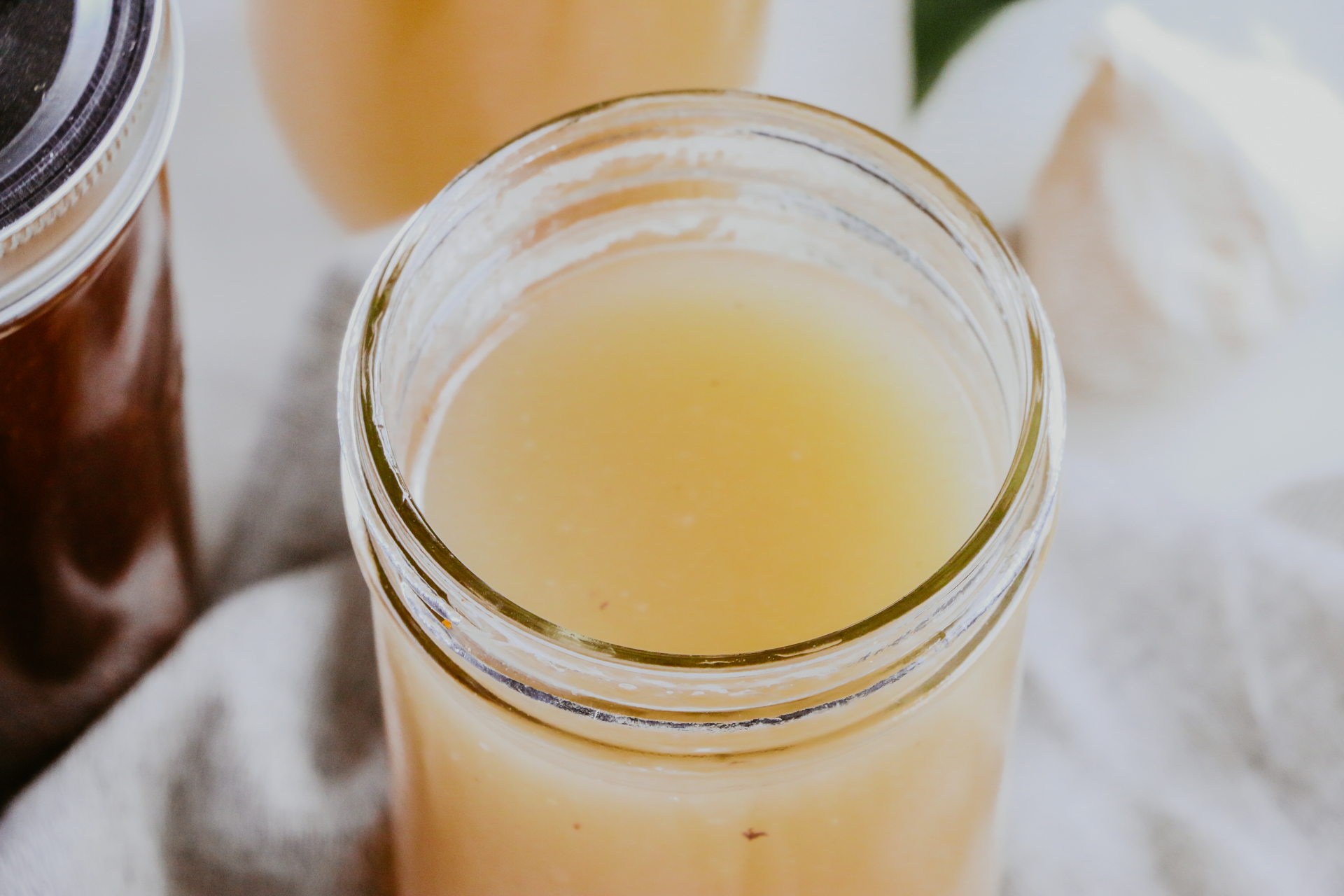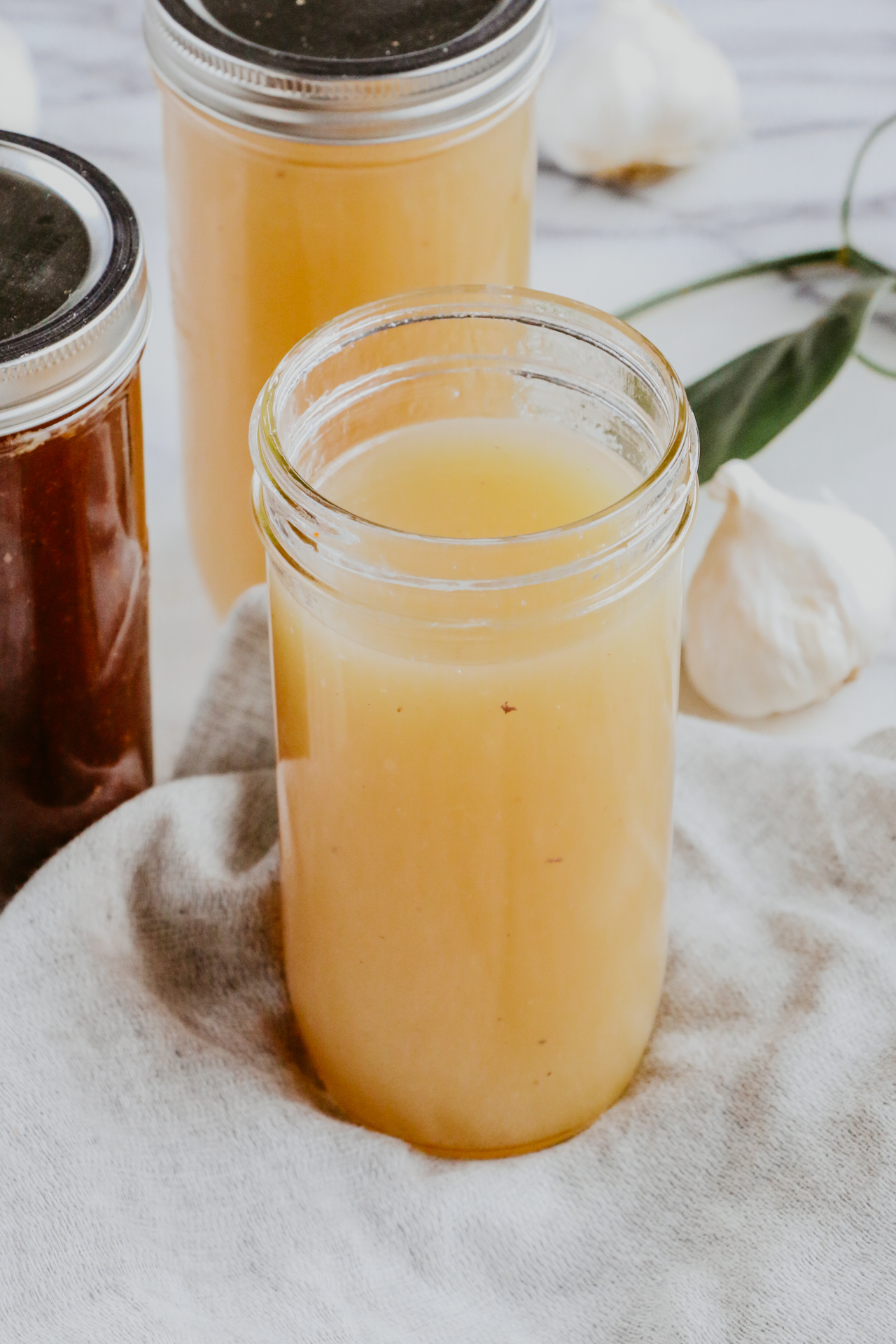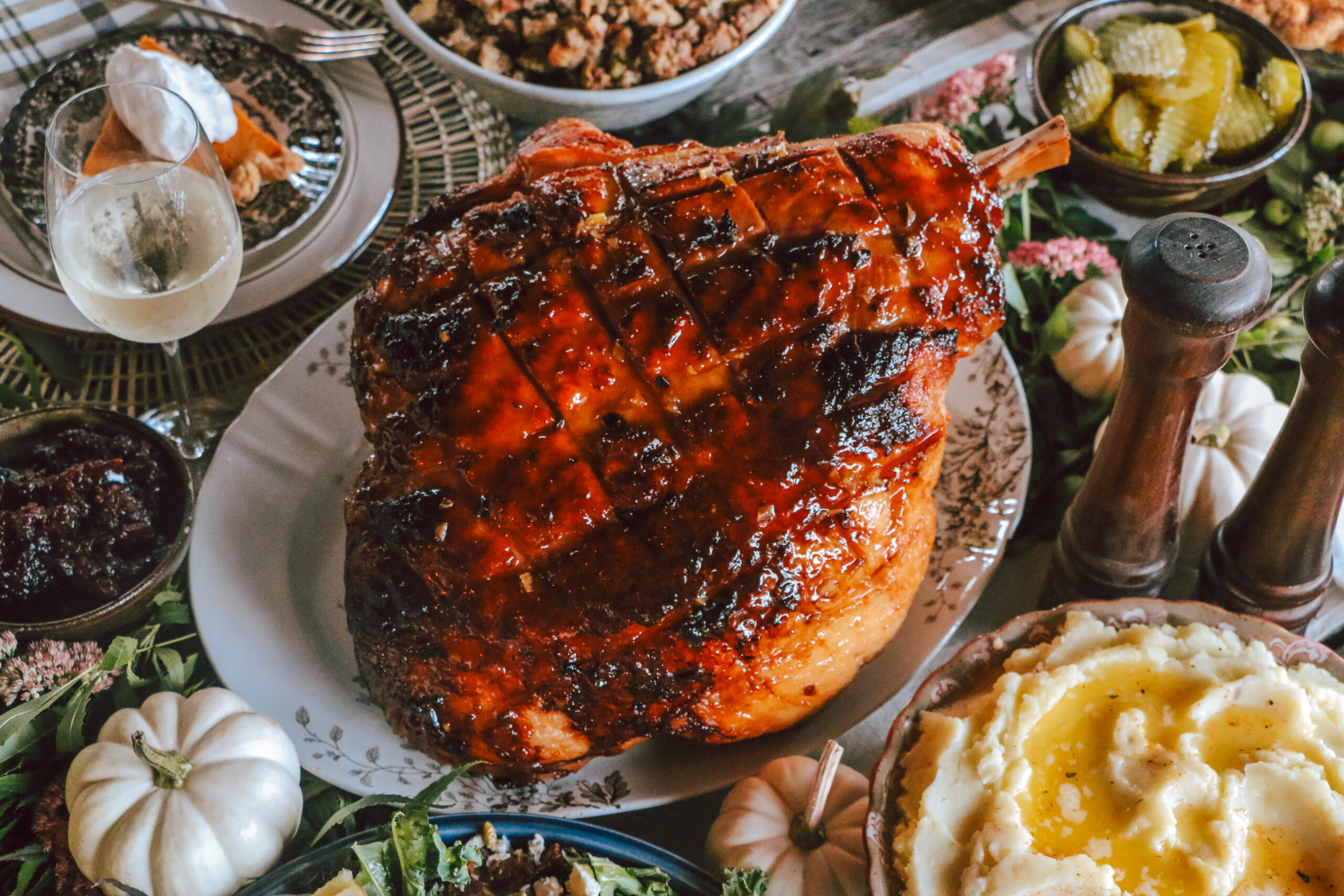I love learning about food! So I was excited to tackle the task of demystifying bone broth and explaining the difference between broth and stock. Bone broth has gained popularity in recent years, and every winter, we find people searching out this product. What we’ve found is that the words broth and stock have been used interchangeably for so long that the search for bone broth can often lead to some confusing conversations. Today, we hope to clarify this for you, helping you understand where our products fit on this scale and give you a recipe for a homemade option.
Let’s start by defining what is meant by bone broth. Bone broth is made using roasted bones, sometimes with the meat attached, and vegetables. The bones are only just covered in water, not a lot, to make the end result quite concentrated. Typically it’s cooked for up to 24 hours, then strained and seasoned. Purists will swear by the rules outlined in this article by Bone Appetit, although that’s not always the case.
On the other hand, stock is water simmered with vegetables (typically carrots, onions, and celery, also known as mirepoix) and animal bones (chicken, beef, fish), sometimes with meat. It’s cooked for four to six hours, then strained. Plain and simple broth is water simmered with vegetables, meat, herbs, and spices, including bones. It’s usually cooked for 45 minutes to two hours, then strained and seasoned.
If this all sounds like the same thing to you, bear with me. The key differences here are the length of cooking time, whether the bones are roasted, and the amount of water.
Why does all this matter? The idea is that the longer you simmer the ingredients, the more nutrients you’ll have in the finished product, which is also why its proponents want it to be more of a concentrated consistency. In recent years, sipping a mug of bone broth has become more of a mainstream trend, with health experts claiming that it heals intestinal issues, is bone-strengthening, joint-improving and benefits the appearance of ageing skin. Whether these theories will be proven right remains to be seen, as there is currently insufficient data for a scientific consensus on it. Nevertheless, let’s get into navigating the various products at the market.

Bo & Marrow
This Canadian brand offers chicken & beef bone broths, simmered for 22 – 24 hours. They use a mirepoix plus other aromatics and even include a little apple cider vinegar. It’s intended for sipping, but you can also use it in soups. This is available in our frozen section.

Lepp’s Chicken Stock
We start with bones with a little bit of meat still on them from our farm-raised chickens. We cover them in just enough water to cover the bones + a few inches, then simmer them for 12 – 14 hours. We use ingredients for flavours like a mirepoix, a combination of carrots, onion and celery, and some herbs & spices.
Lepp’s Beef Stock
We start with bones with a little bit of meat still on them from our ranch-raised beef. We roast the beef bones and cover them in enough water to just cover them + a few inches, bring to a boil & simmer for 12 – 14 hours. We use ingredients for flavour like a mirepoix, red wine, herbs and spices.

Boxed Broths, like Imagine or Knorr
Although some are starting to change their packaging & ingredients lists to serve the “sipping broth” demand, they don’t seem to specify the length of cooking time. If the time matters to you, it’s unclear if this will fit the bill. These are still great options for making soups, especially since you can store them in the pantry so they’re always ready to go.
Homemade
This is the best way to use exactly the ingredients you want and control the length of cooking time. Just be sure to open some windows and turn on a fan! Always be careful when simmering on the stovetop for extended periods, and don’t leave it unattended. Find the recipe here.








